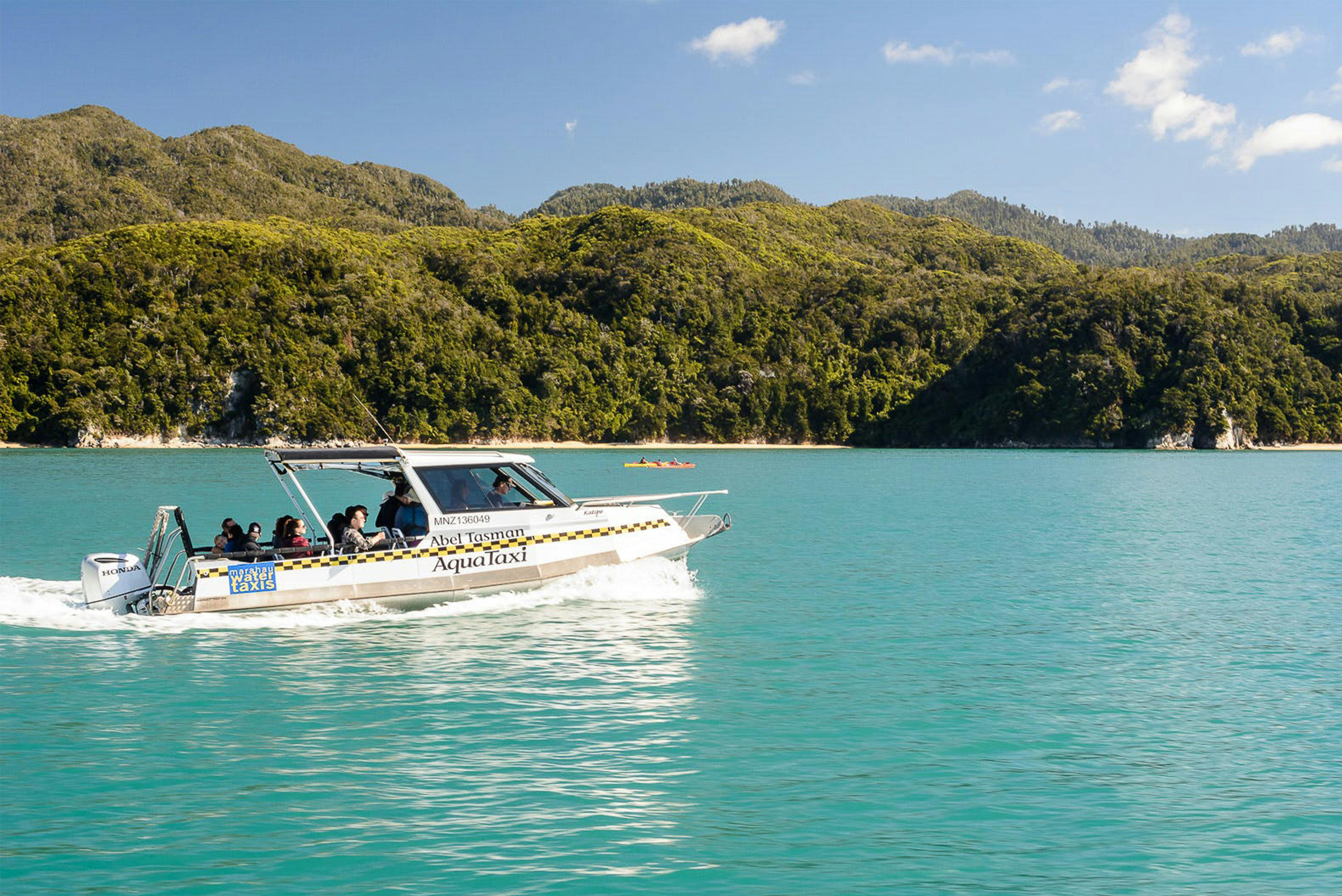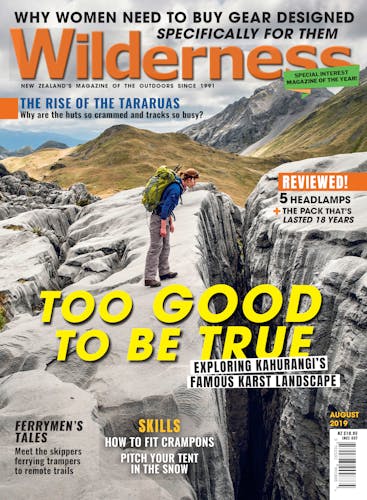Water taxi skippers work on the front lines of the backcountry, observing the best and worst of trampers in New Zealand – here are their stories.
After 15 years of skippering, Abel Tasman AquaTaxi operator Spencer Bailey has seen it all – the good, the bad, and the smelly.
From the North American visitor who spent a night up a tree because he thought he saw beer poo on the track, to the hiker who smelled so bad he was forced to swim before boarding, it’s impossible to predict what a new day will bring.
“You can’t have a big group of people without a few tossers in the mix,” says Bailey.
Regular offenders leave their rubbish behind, steal nights in the park or try to run off without paying for their taxi, but some visitors are so bizarre, staff are still scratching their heads, years later.
Bailey’s colleagues were once shocked to find a brand new tent, stocked with new sleeping bags, mattresses, packs and clothes abandoned at the Anchorage campsite. The owners, having done their dash with camping, had booked a ride out and couldn’t be bothered taking their expensive new gear.
Despite the huge numbers of visitors using the park, Bailey says it’s extremely rare for walkers to get into any real trouble.
“We’ve only had two or three times where people have been left in the park [overnight], and they always find someone to look after them, whether it’s a bach owner or a DOC warden. They’ve always found a bed and something to eat,” he says.
As expected, it’s usually the inexperienced getting into trouble.
“Daywalkers are going to be slightly more amateur, more vulnerable, and more of a worry at the end of the day if they’re not showing up,” he says.
“A tramper is more motivated, more of an outdoors puritan, and all round slightly more capable of dealing with adversity. They’re a tougher bunch.”
More predictable than the behaviour of visitors is the park’s weather – which says a lot about the behaviour of visitors.
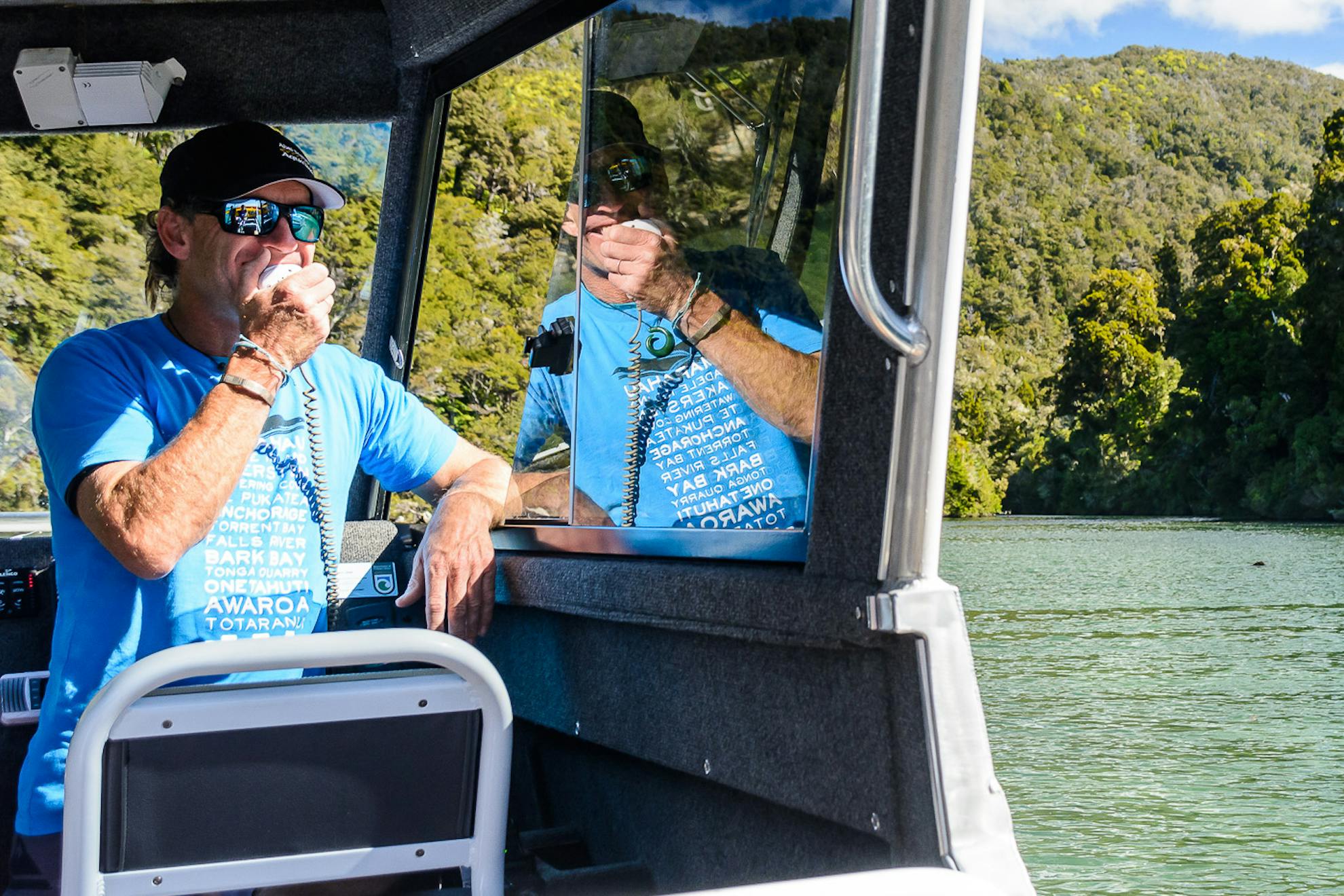
Rain or shine, the boats are out on the water, moving up to a hundred people a day in peak season.
In all his years of skippering, Bailey recalls just one day when the weather was too bad to operate – in the midst of ex-cyclone Fehi in February 2018.
Fehi’s extreme weather caused more than $1million worth of damage to the park, and cost DOC $30,000 in refunded hut tickets.
In all other weather, water taxis are obligated to pick up passengers, Bailey says, even if it means trampers have to walk to a safer landing location.
“If there’s bad weather, there will be people in the park who have run out of food, and they’ll be wet and cold – they need to come out,” he says.
While the boats are designed to stand up to tough ocean conditions, the highest seas are left for the experienced skippers to navigate, and bumpy rides can make for some unhappy passengers.
“There’ll be people crying who you can’t really console, but I tell them I don’t come to work to die, as I’ve got a family to go home to. We wouldn’t be out here if it wasn’t safe,” he says.
A good day in the park, however, is hard to beat, and after thousands of trips, Bailey says the beauty can still sneak up on him.
Turquoise waters, whale and dolphin visitors, baby seals jumping onto the boat – it’s hard to imagine a better office environment.
“You do get used to it, but every now and again it can stun you with how ridiculously beautiful it is,” he says.
“You never get sick of watching people enjoy it – especially New Zealanders who are wide-eyed and appreciative of a little gem they didn’t know they had in their own country.”
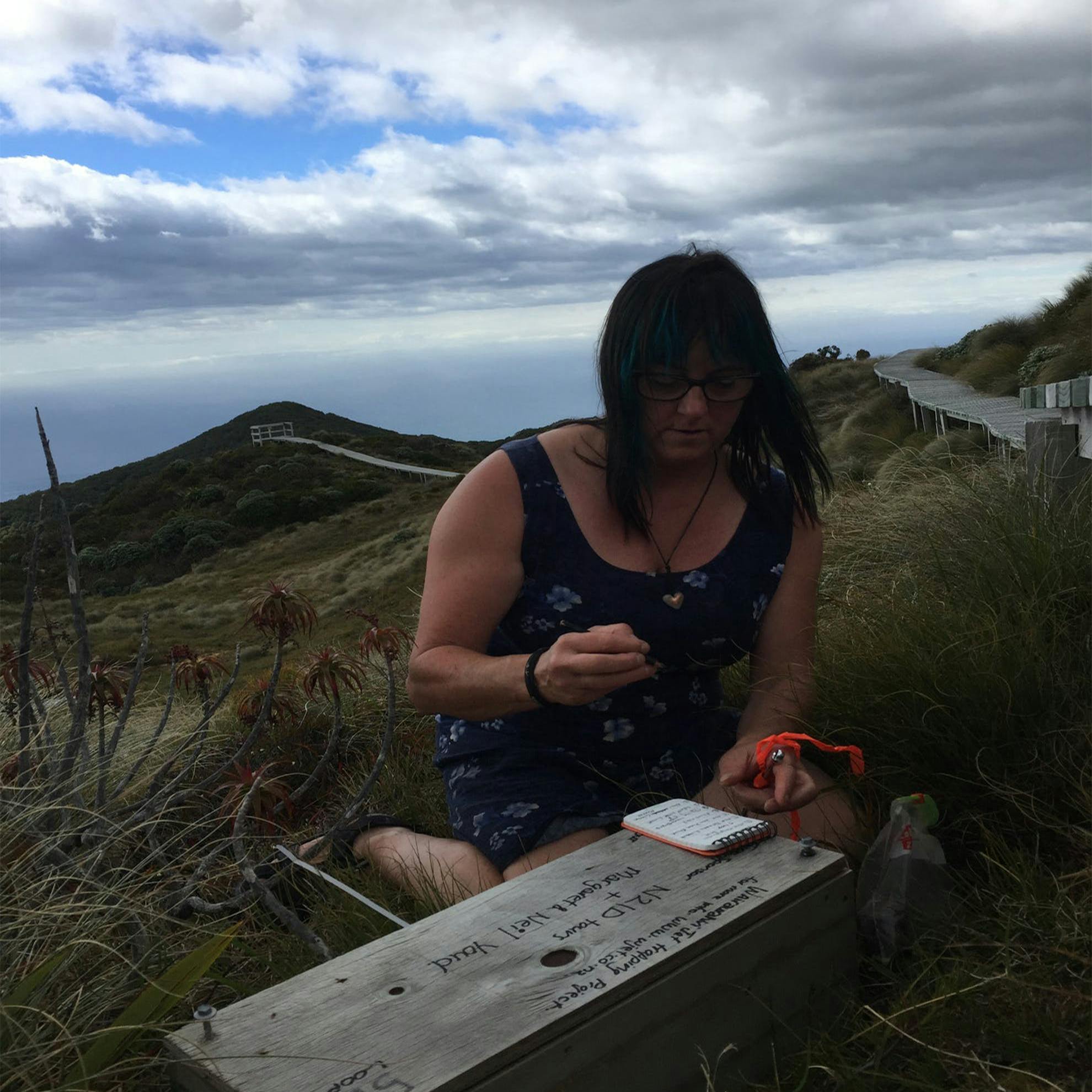
And for those hoping to escape the summer crowds, winter in the Abel Tasman isn’t half bad.
“We have a pretty temperate climate in the north, and we don’t get the depths of winter. We’ll have a series of cold snaps and I’ll light my fire at home, but we get a lot of beautiful wind-free days in the middle of winter,” he says.
“You’ll have one or two boats operating, and it’s much more like how visiting a national park should be.”
Overcrowding is a problem husband and wife team Joyce Kolk and Johan Groters are less likely to experience.
The couple owns Wairaurahiri Jet in Southland’s isolated Tuatapere, running scenic tours and servicing the Dusky, South Coast and Hump Ridge tracks.
Kolk, who looks after the 8-10 day Dusky Track says she is constantly surprised at the number of trampers who don’t pre-book a ride out.
“One guy waited five days,” she says. “He was lucky I had a trip booked, because if I don’t have people to take, I don’t go.”
The disorganised tramper had fortunately packed extra food, but Kolk has started stashing emergency food supplies at the track end, in case somebody is caught dangerously short.
She has been equally shocked by the amount of gear some trampers bring. She recalls a Christmas tramper who, intent on decking the huts with festive cheer, had packed no less than three litres of wine for the Dusky Track.
“It was the heaviest pack I had ever picked up,” Joyce says. “I remember saying ‘I’d start drinking if I were you – crack into it’ as she started the track. If she had rolled over onto her back, she would have been stuck there.”
Most trampers get the balance right, Groters says, but occasionally the couple has to deal with the incredibly underprepared.
“Some of them have done many tracks, but they have no communication [and logistics planning] skills – they’re just relying on teaming up with somebody,” he says.
Part of the job involves gauging whether trampers are prepared enough for their intended adventures and letting them know if they’re not.
“One lady asked if there were shops on the way,” Kolk says.
“Some backpackers haven’t got the vaguest idea, and they’re wanting to go, but Joyce puts the fear of God into them,” Groters adds. “We don’t want to be the person to tell your mother we were the last to see you. If we don’t think we should drop you off, we won’t.”
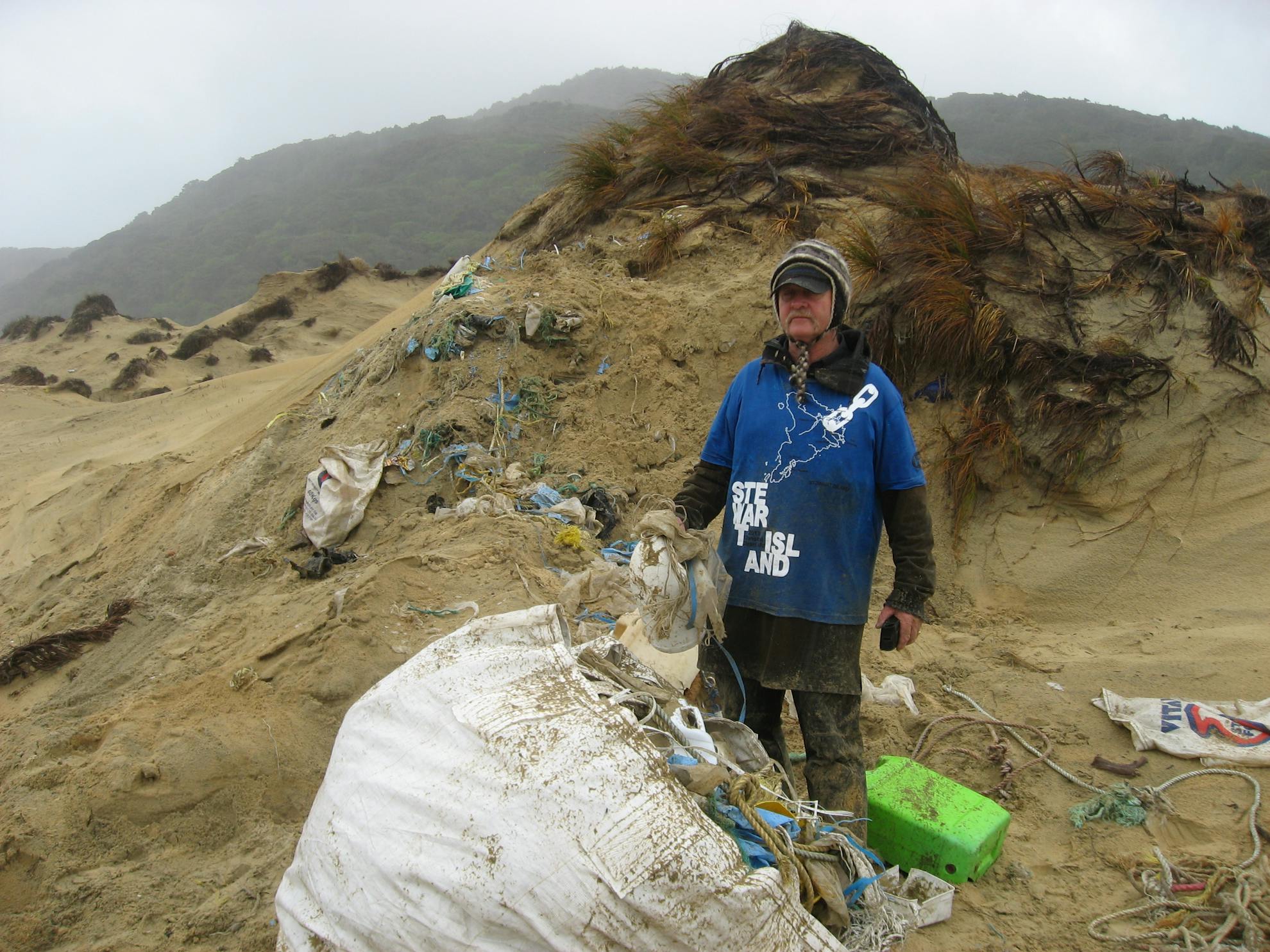
Operating in Fiordland is something the couple never takes for granted.
“When [Lake Hauroko] is calm, it’s gorgeous. When it’s wild and nasty, it’s still gorgeous, but not quite so nice,” Kolk says.
Groters agrees – the job is picture perfect even in its moodiest weather.
“We certainly appreciate it – even when it’s shitty. We see it through the eyes of other people,” he says.
Working on the Wairaurahiri River since 1996, Groters has had a front-row seat to the area’s disappearing wildlife.
“It’s hard not to be negative about it, but we’ve seen the blue duck, mohua and the brown teal all disappear, and the South Island kōkako, which was likely there five years ago, is most likely gone now,” he says.
“The [mega-mast] seeding this year has been astronomical, and it can only lead to one thing – a complete disaster.”
The upsetting decline inspired the couple to begin a predator trapping project in 2006, which has now grown to around 300 sponsored traps.
As a trustee of Southern Coastal Charitable Trust, Kolk also runs numerous cleanups in the region – her contributions to conservation earned her a Queen’s Birthday Honour this year.
The sense of guardianship over their workplace stems from the couple’s love for their working environment.
Groters says it’s impossible to resist sharing his local knowledge with visitors, even if they’re only along for a drop off trip.
“I just can’t help myself – even if I only get a few minutes here and there to explain things,” he says.
Lake Rotoiti Water Taxi skipper Hamish Simpson feels lucky when he rolls out of bed in the morning.
Hitching the trailer on to the tow bar, he heads to the boat ramp for a day in his office.
“Some mornings, you’ve got the mist rising from the lake and the sun hitting the mountains and it’s just absolutely stunning,” he says.
“It’s one of those jobs where I never wake up in the morning thinking ‘I don’t want to do this’. I mean, if it’s bucketing down with rain or wind-driven snow I might not want to get out of bed – but for the most part, I do.”
It’s been seven years since Simpson took over the business, which has been operating since 1974.
“I haven’t looked back, to be honest. It’s a lot of fun, and I get to meet pretty good people,” he says.
“Out of the 3000 passengers I’ll take in a year, there is only a handful who I don’t particularly want to see again – and that’s pretty good odds.”
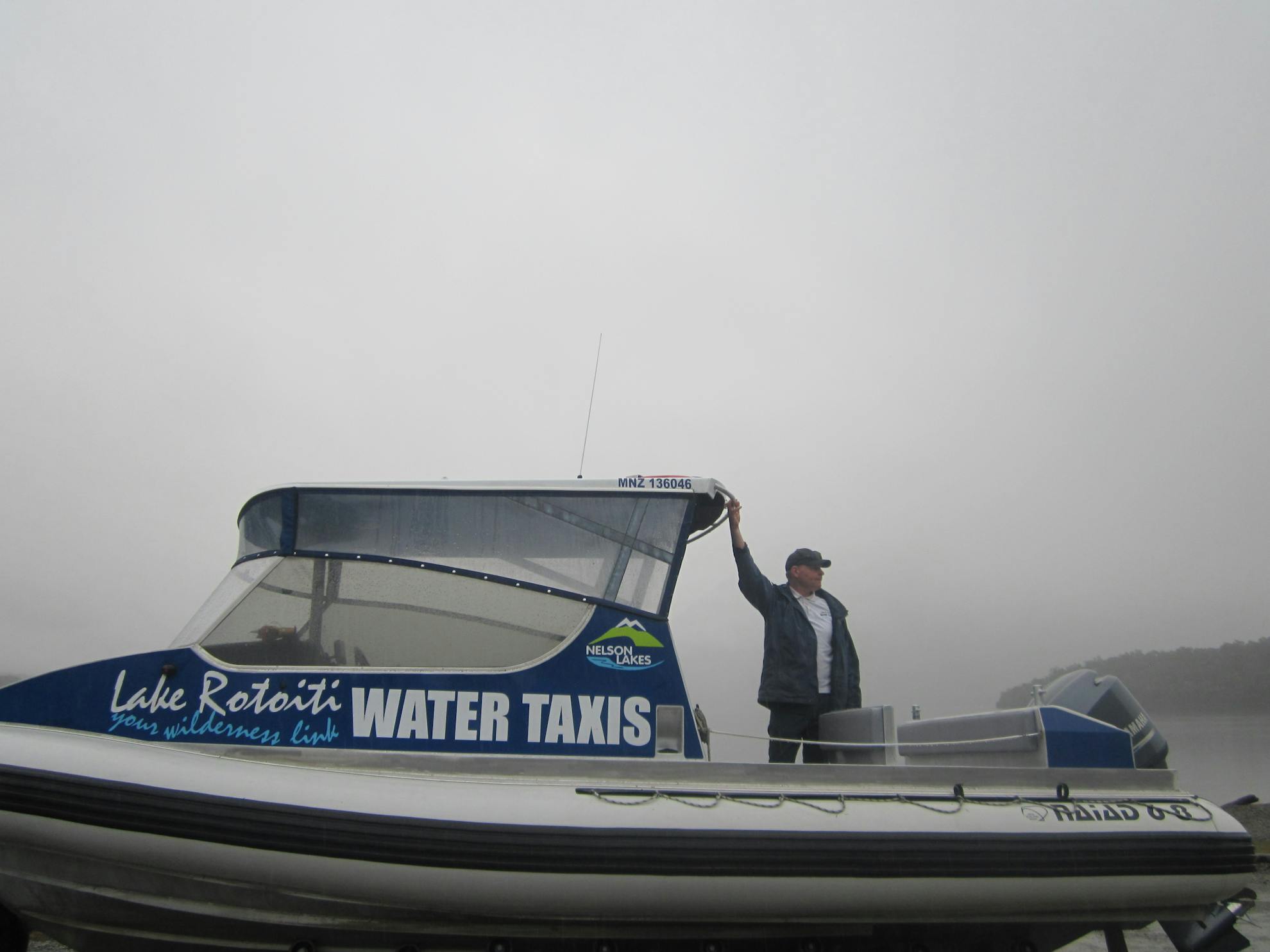
One of his most memorable passenger experiences was with a middle-aged couple wearing matching safari gear.
“They were dressed like Dr Livingstone going on a trip up the Zambezi,” he says. “Most people love the friendly Kiwi thing, and they just want a yarn so I started doing my spiel about the lake, and they said ‘excuse me, driver, can you just drive the boat?’ So you do get a few oddballs.”
While the majority of Simpson’s clientele is well-prepared, he’s seen some “absolute beauts”, including a tramper taking a businessman’s carry-on luggage bag with DIY straps on the Travers-Sabine Track, a couple walking an overnight tramp with a pushchair, and the many walkers heading out with Chuck Taylor sneakers.
“[Safety] is their responsibility, but I do try and influence them,” Simpson says.
“I have never got to the stage of saying no. You get a bit of a feel for their experience by the way they talk.”
With the growing number of trampers heading into alpine environments, Simpson says safety is becoming more of an issue, as less experienced trampers don’t understand how vicious and unpredictable New Zealand weather can be.
“Up in the mountains, the weather is about 60 per cent accurate, and unfortunately in this day and age with the technology we have, people will say there’s meant to be a front coming through at 2:43pm, and it’s just not like that,” he says.
Operating on an isolated coldwater lake means help isn’t always close at hand if things go wrong, and safety precautions are a top priority.
“We can operate in nearly anything in summer, but most days in winter we are the only boat out there. If we have an accident in a 50-knot southerly and the lake is six degrees, no one is coming to get us,” he says.
“We have to be a lot more vigilant in winter, and quite often we will hug the coastline going out.”
Occasionally, Simpson is called in to assist with minor search and rescue operations, and collect trampers who have become disoriented or injured.
“Kiwis too will fall over and maybe break their arm, and they don’t want to let off their PLB or make a fuss. They like to understate things a little bit, and would rather I come out and get them,” he says.





